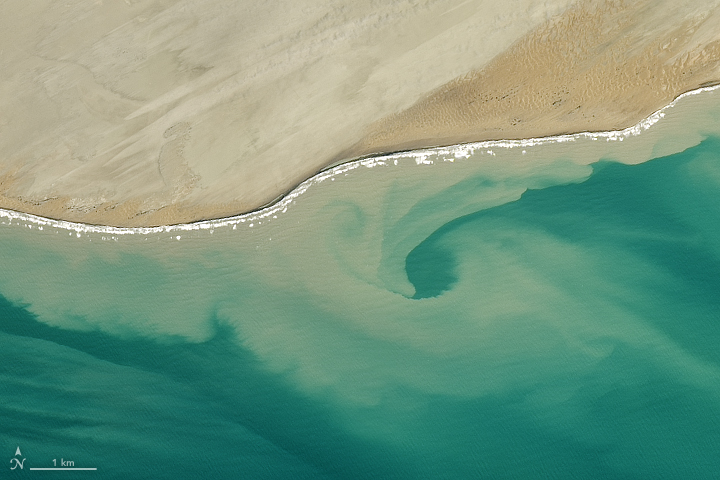


Editor’s note: today’s caption is the answer to the July puzzler.
Where Pakistan’s coast meets the Arabian Sea, arid terrain contrasts sharply with the open waters beyond it. Sometimes the two overlap, and the land bleeds into the water. It did just that when sediment poured into the sea in May 2017.
The image above shows the Makran Coast on May 25, 2017, when it was observed by the Operational Land Imager (OLI) on the Landsat 8 satellite. To the left of the image, the sediment-rich Hingol River feeds into the Arabian Sea. As its tan color indicates, the river frequently carries large amounts of sand and other debris. This is particularly true after a rare rain.
“Rivers in arid and semiarid areas tend to carry lots of sediment when it rains heavily because there is no vegetation,” said Peter Clift, a professor of geology and geophysics at Louisiana State University. Once river water—and accompanying sediment—reaches the ocean, it is swept along by currents. “It looks like the sediment is being pushed along the coast by eastward flowing longshore currents, which are typical along this coast,” Clift added. As for the swirl pattern, it could be a result of underwater terrain.
Sparsely populated, this section of coast is part of Balochistan, one of Pakistan’s four provinces. Bordering Iran to the west and Afghanistan to the north, Balochistan supplies much of Pakistan’s natural gas. It also contains active mud volcanoes, some of them standing hundreds of feet tall. Just inland from the beach, the landscape becomes rugged, with canyon-like protrusions and scores of parallel ridges running east to west. The narrow valleys between them provide pastures for sheep and stretches of arable land amid the desert.
NASA Earth Observatory images by Joshua Stevens, using Landsat data from the U.S. Geological Survey. Story by Pola Lem.